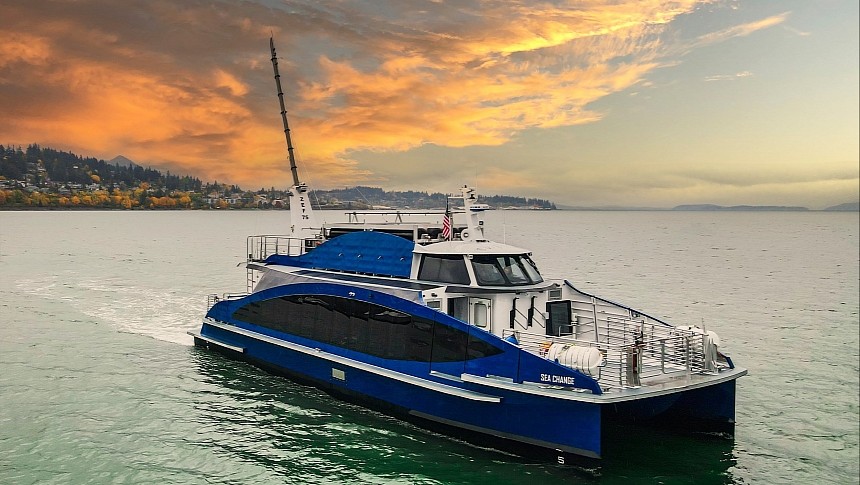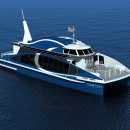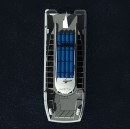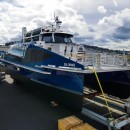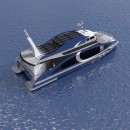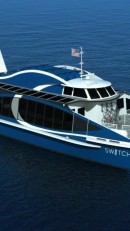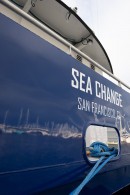Switch Maritime is a name worth remembering. Launched in 2018, this ambitious startup is slowly but surely building a pioneering fleet of zero-emission, high-performance commercial ferries harnessing the power of hydrogen fuel cells.
We couldn't imagine today’s maritime transportation industry without ferries. These vessels are pivotal for passenger and vehicle transportation in many parts of the world, including the US. At the same time, there's no denying that the current ferry fleets are aging and are no longer suitable for present and future challenges related to the environmental footprint.
One of the companies tackling this issue is the San Francisco-based Switch Maritime. Luckily, it didn't just come up with a promising concept but actually brought it to life, paving the way for hydrogen-powered ferry operations.
Two years ago, Switch Maritime was still working on its flagship vessel, the Sea Change. It was announced as a 72-foot (21-meter) aluminum catamaran ferry with a 75-passenger capacity. What made it unique was the combination of two 300 kW electric motors with a 360 kW hydrogen fuel cell system and 100 kWh of lithium-ion battery storage.
As a result, Sea Change promised a 300-nautical mile (555 km) range and a cruising speed of 16 knots (18.4 mph/29.6 kph). While boasting similar performance to diesel-powered ferries, Sea Change enabled emission-free operations while also reducing noise and vibrations.
The Sea Change took a long time to complete. The project was initiated in 2016, with a $3 million co-funding from the California Air Resources Board (CARB). The manufacturer also had to work closely with the United States Coast Guard (USCG) to meet the requirements for the safe integration of hydrogen and electric powertrain systems on a passenger vessel.
The pioneering ferry was built at Bay Ship and Yacht in Alameda, California, and then moved to Bellingham, Washington, where the hydrogen fuel tanks were installed. Last year, the company officially received regulatory approval from the USCG for hydrogen powertrain and storage systems, allowing Sea Change to start operating.
Sea Change will operate within the SF Bay ferry fleet owned by the Public Water Emergency Transportation Authority (WETA). It claims to be the first of its kind in the US.
In the meantime, the San Francisco-based company reached a financial milestone that will help it accelerate the development of a zero-emission fleet. At the end of its Series A round, it secured $10 million.
With Sea Change ready to demonstrate its capabilities within WETA's San Francisco Bay fleet, the startup is gearing up for the next step. It plans to adapt its successful concept to large-scale vessels, starting with 150-passenger models and all the way up to 450-passenger hydrogen fuel cell-powered passenger ferries.
The ultimate goal is to offer a valid alternative for both private and public ferry operators, together with packaged fueling/charging solutions.
One of the companies tackling this issue is the San Francisco-based Switch Maritime. Luckily, it didn't just come up with a promising concept but actually brought it to life, paving the way for hydrogen-powered ferry operations.
Two years ago, Switch Maritime was still working on its flagship vessel, the Sea Change. It was announced as a 72-foot (21-meter) aluminum catamaran ferry with a 75-passenger capacity. What made it unique was the combination of two 300 kW electric motors with a 360 kW hydrogen fuel cell system and 100 kWh of lithium-ion battery storage.
As a result, Sea Change promised a 300-nautical mile (555 km) range and a cruising speed of 16 knots (18.4 mph/29.6 kph). While boasting similar performance to diesel-powered ferries, Sea Change enabled emission-free operations while also reducing noise and vibrations.
The Sea Change took a long time to complete. The project was initiated in 2016, with a $3 million co-funding from the California Air Resources Board (CARB). The manufacturer also had to work closely with the United States Coast Guard (USCG) to meet the requirements for the safe integration of hydrogen and electric powertrain systems on a passenger vessel.
The pioneering ferry was built at Bay Ship and Yacht in Alameda, California, and then moved to Bellingham, Washington, where the hydrogen fuel tanks were installed. Last year, the company officially received regulatory approval from the USCG for hydrogen powertrain and storage systems, allowing Sea Change to start operating.
Sea Change will operate within the SF Bay ferry fleet owned by the Public Water Emergency Transportation Authority (WETA). It claims to be the first of its kind in the US.
In the meantime, the San Francisco-based company reached a financial milestone that will help it accelerate the development of a zero-emission fleet. At the end of its Series A round, it secured $10 million.
With Sea Change ready to demonstrate its capabilities within WETA's San Francisco Bay fleet, the startup is gearing up for the next step. It plans to adapt its successful concept to large-scale vessels, starting with 150-passenger models and all the way up to 450-passenger hydrogen fuel cell-powered passenger ferries.
The ultimate goal is to offer a valid alternative for both private and public ferry operators, together with packaged fueling/charging solutions.
